Contents
Overview
"The Interactive Movie Map - A Surrogate Travel System" is an interactive video application made by MIT in the 1970s (also known as "The Aspen Movie Map"). This pioneering interactive video project documented the town of Aspen, Colorado in the USA and includes a comprehensive set of 360 degree street photography as well as a large number of still photographs of the exterior and interior of buildings.
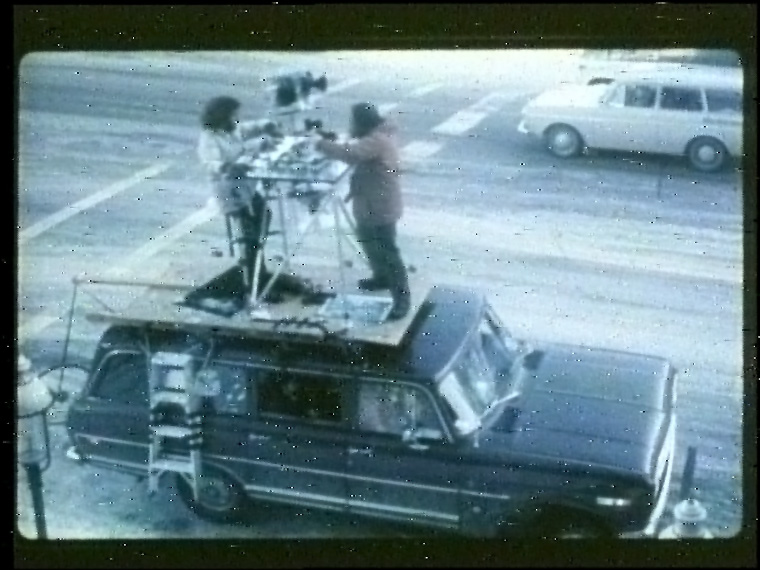
The project was recorded onto a single LaserDisc and accessed using a customised computer control system that allowed the operator to travel around Aspen exploring the many streets both in the summer and winter seasons.
Note: The Domesday86 project is very interested in preserving this LaserDisc. Only one copy has been duplicated so far and the disc had heavy damage from 'laser rot'. If you have any information on additional discs, or own a copy of this disc, please get in touch using the Contact us page.
You can view the entire disc contents on LBRY.
The Domesday86 project would like to thank Brent Greissle for the loan of the MIT disc and allowing us to duplicate it.
Description
Source: Michael Naimark's website
The first interactive moviemap was produced at MIT in the late 1970s of Aspen, Colorado. A gyroscopic stabilizer with 16mm stop-frame cameras was mounted on top of a camera car and a fifth wheel with an encoder triggered the cameras every 10 feet. Filming took place daily between 10 AM and 2 PM to minimize lighting discrepancies. The camera car carefully drove down the center of the street for registered match-cuts. In addition to the basic "travel" footage, panoramic camera experiments, thousands of still frames, audio, and data were collected. The playback system required several laserdisc players, a computer, and a touch screen display. Very wide-angle lenses were used for filming, and some attempts at orthoscopic playback were made.
Disc contents
The LaserDisc used to create this documentation was labelled "Aspen 4".
The disc is divided into 7 sections with multiple sub-sections as follows:
1.0 Surrogate Travel
1.1 Speed and Route Control
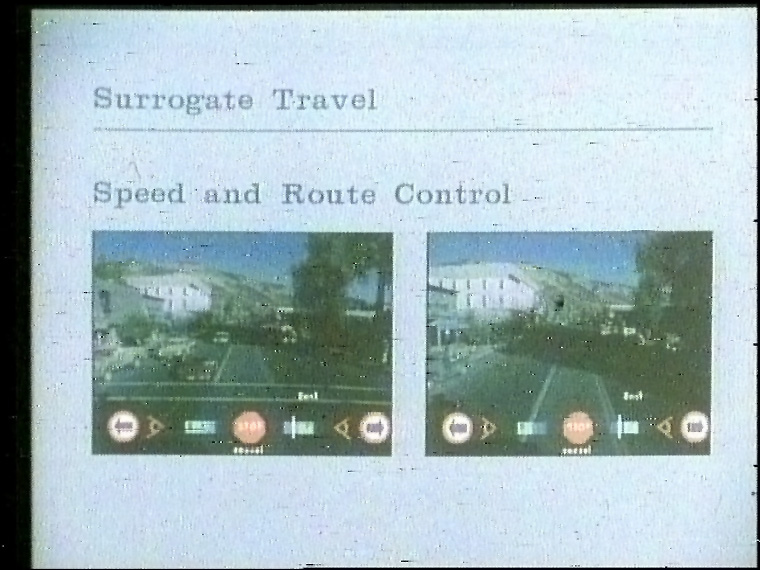
2.0 Augmentations
2.1 Side Views
2.2 Season Selection
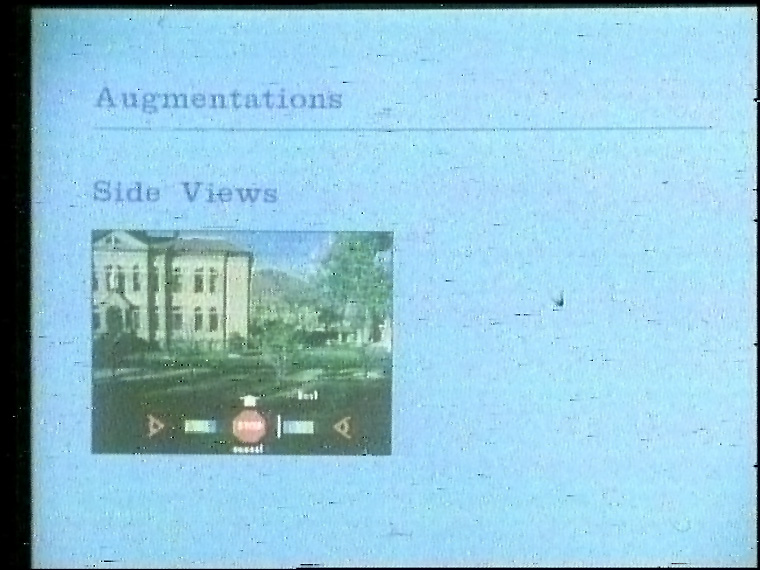
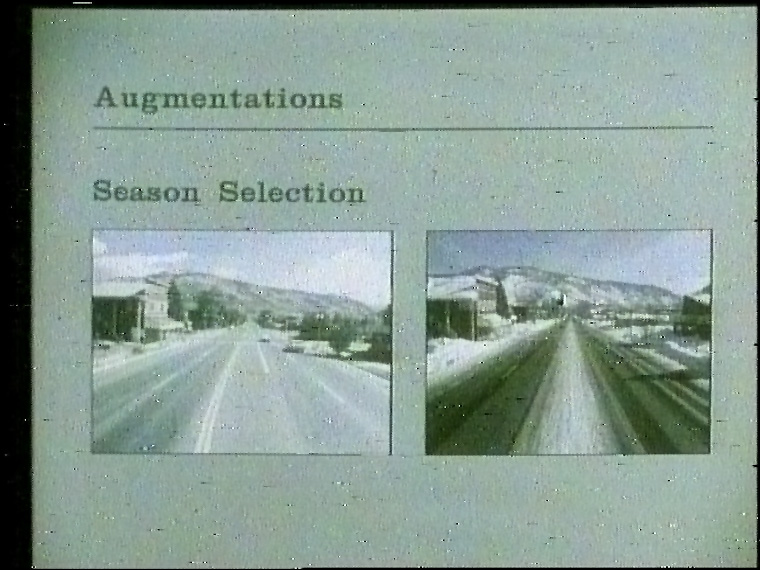
3.0 Computer Generated Animation
3.1 Ground Level Travel
3.2 Aerial Travel
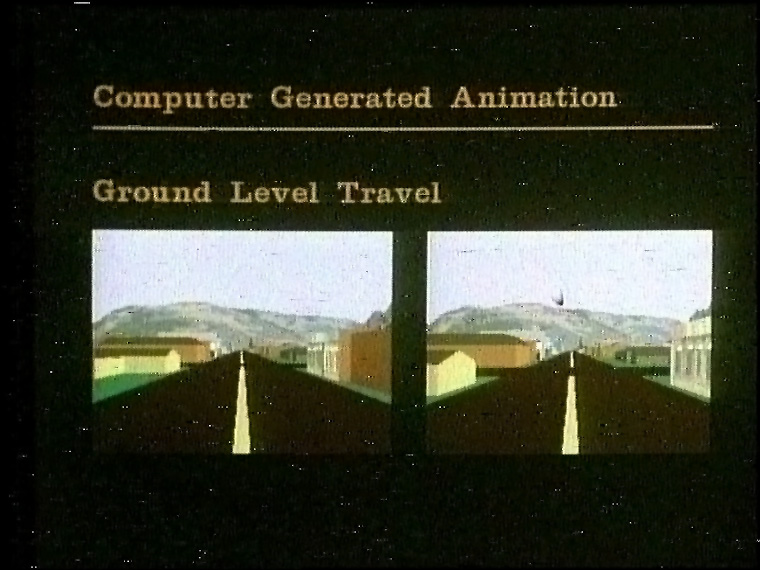
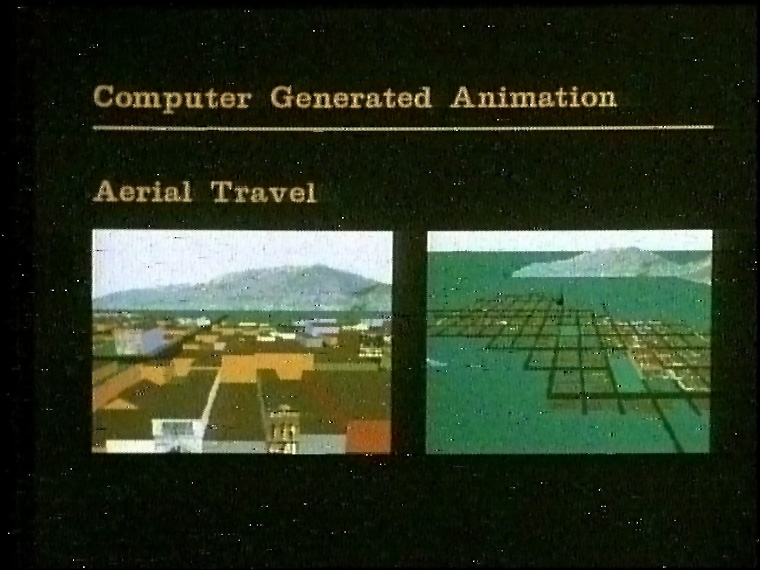
4.0 Panoramic Imagery
4.1 Anamorphic Lenses
4.2 Synthesized Turns
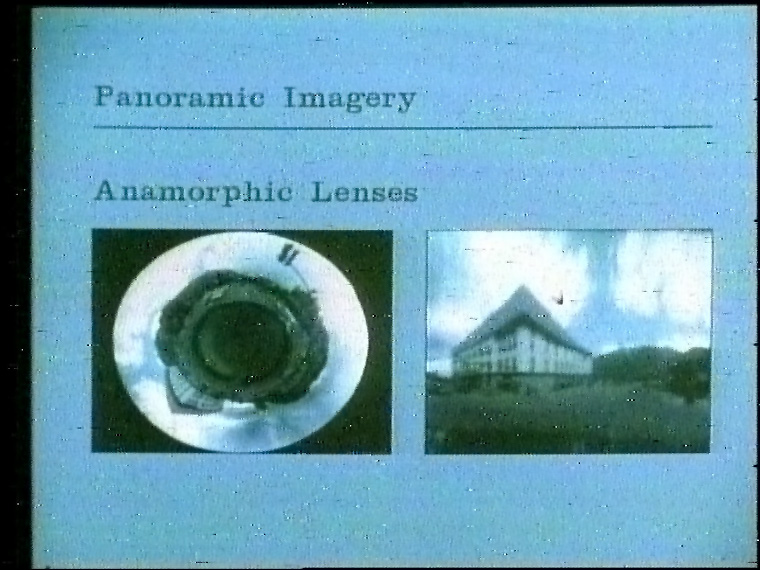
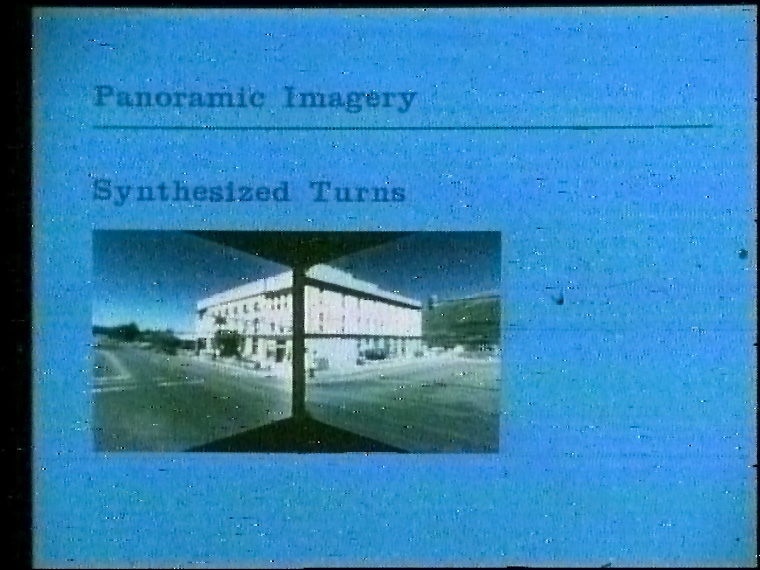
5.0 Cultural Data Access
5.1 Seasonal Facades
5.2 Historical Rephotography
5.3 Slide Shows/Facsimile Data
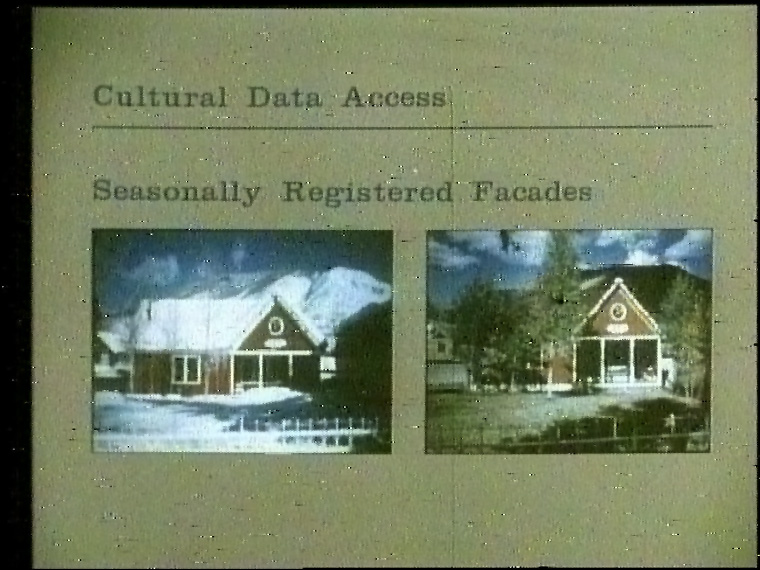
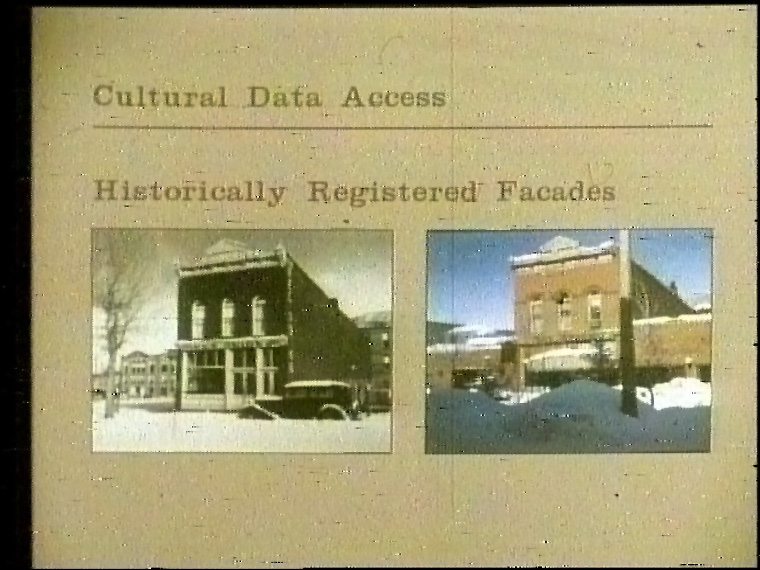
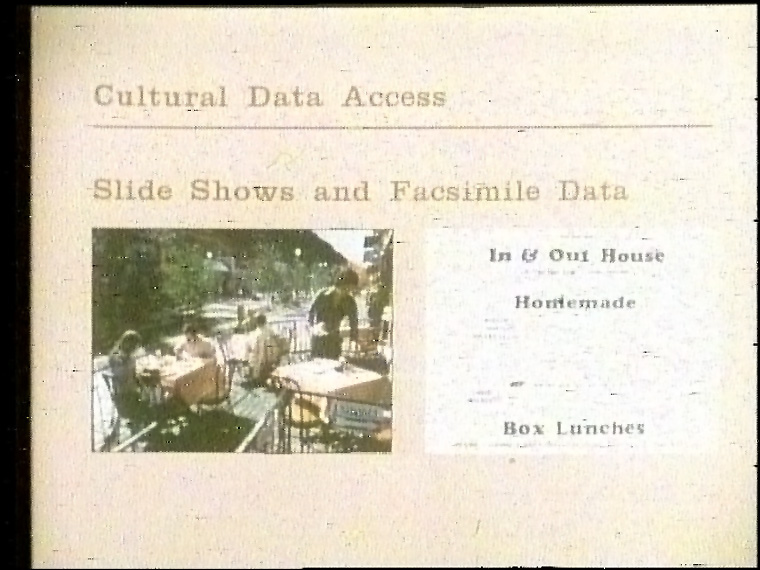
6.0 Orientation Overviews
6.1 Introduction to the Town
6.2 Dynamic Aerial Photos
6.3 Dynamic Maps
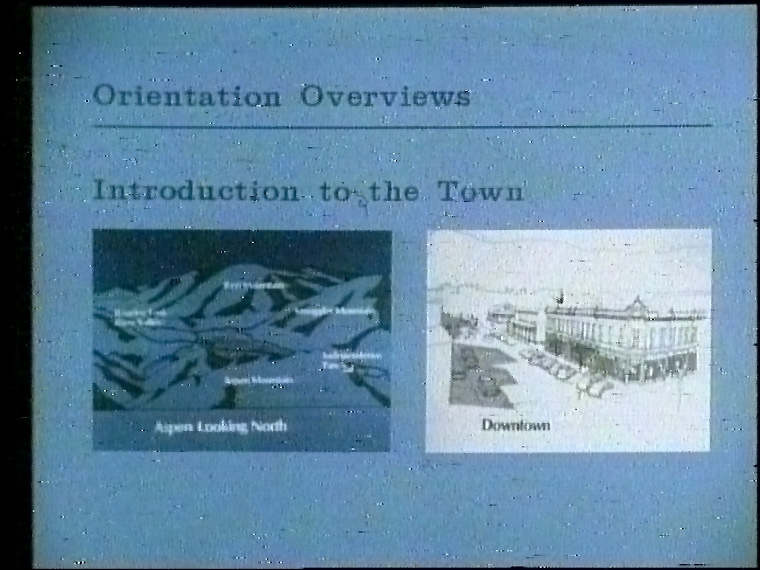
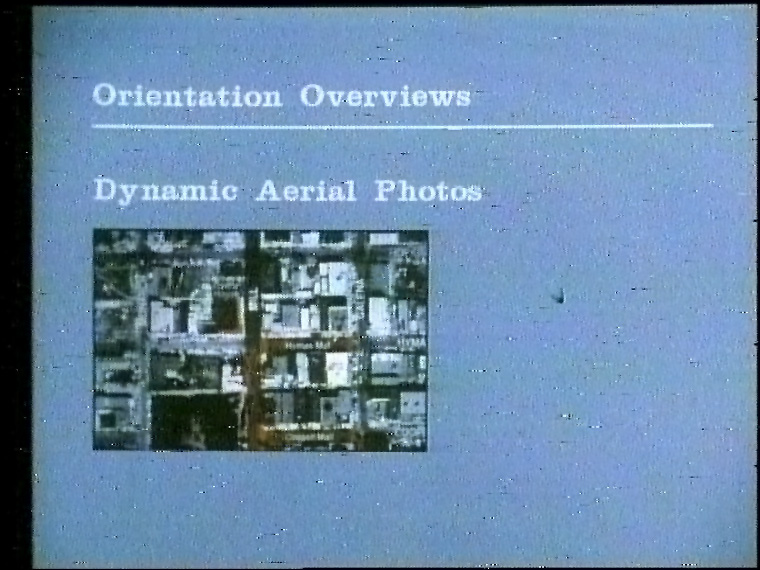
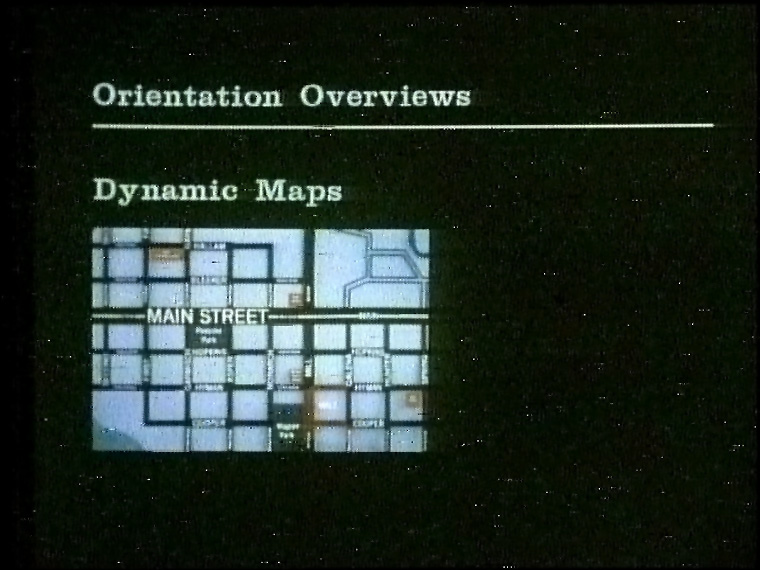
7.0 Documentation
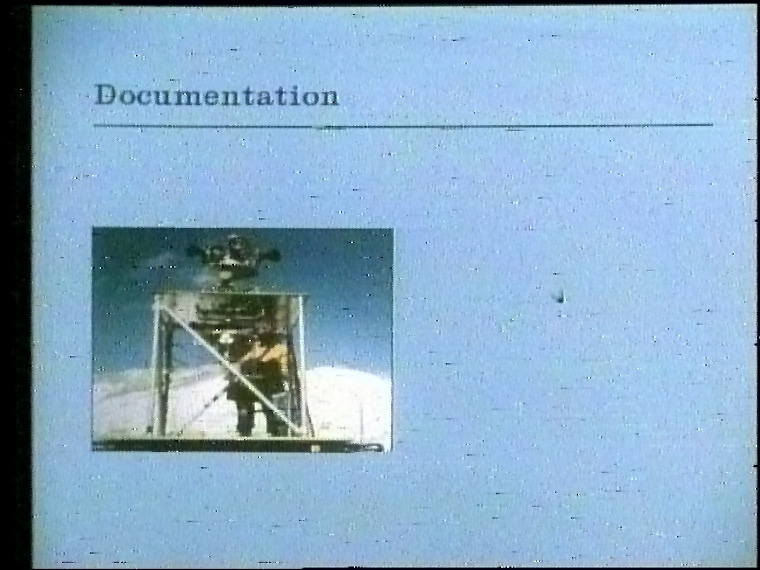
Frame number index
The following list shows the main contents of the disc and the frame number of the section:
Index:
Surrogate Travel
Front Views 19291
Side Views 33110
Turns 6962
Season Selection 28511
Computer Animation:
Ground Level Travel 2612
Aerial Travel 555
Panoramic Imagery:
Anamorphic Lenses 151
Synthesized Turns 5711
Cultural Data Access:
Seasonal Facades 43173
Historical Rephotography 43076
Slide Shows and Facsimile Data 43397
Orientation Overviews:
Intro to the Town 44401
Dynamic Aerial Photos 47000
Dynamic Maps 44446
Documentation 42736
Press Clippings
Aspen Daily News
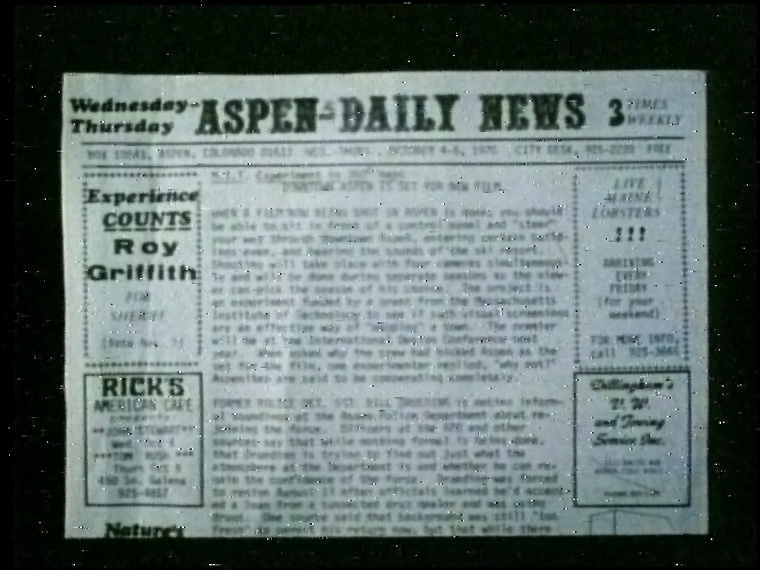
When a film now being shot in Aspen is done, you should be able to sit in front of a control panel and "steer" your way through downtown Aspen, entering certain buildings even, and hearing the sounds of the ski resort. Shooting will take place with four cameras simultaneously and will be done during separate seasons so the viewer can pick the season of his choice. The project is an experiment funded by a grant from the Massachusetts Institute of Technology to see if such visual screenings are an effective way of "mapping" a town. The premier will be at the International Design Conference next year. When asked why the crew had picked Aspen as the set for the film, one experimenter replied, "why not?" Aspenites are said to be cooperating completely.
The Aspen Times
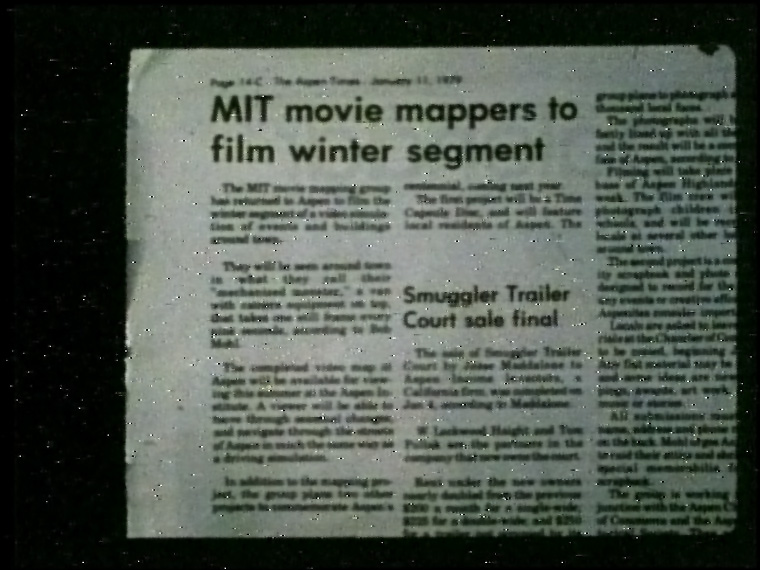
MIT movie mappers to film winter segment
The MIT movie mapping group has returned to Aspen to film the winter segment of a video simulation of events and buildings around town.
They will be seen around town in what they call their "mechanized monster", a van with camera equipment on top, that takes one still frame every nine seconds, according to Bob Mohl.
The complete video map of Aspen will be available for viewing this summer at the Aspen Institute. A viewer will be able to move through seasonal changes, and navigate through the streets of Aspen in much the same way as a driving simulation.
In addition to the mapping project, the group plans two other projects to commemorate Aspen's centennial coming next year. The first project will be a Time Capsule Disc, and will feature local residents of Aspen. (Note: There is more to this article, but the text is not included on the disc).
Academic papers
Computer Animation via Optical Videodisc - Walter Bender (PDF)
Movie-Maps: An Application of the Optical Videodisc to Computer Graphics - Andrew Lippman (PDF)
Cognitive space in the interactive movie map: An investigation of spatial learning in virtual environments - Robert Mohl (PDF)
DARPA Funding
The following information about the DARPA funding for the project is given on the LaserDisc:
All work affiliated with this project has been funded in its entirety by the Cybernetics Technology Division of the Defense Advanced Research Projects Agency.
Dr. Craig Fields, Director Cybernetics Technology Division
Dr. Robert Fossum, Director DARPA
Contract Number MDA-903-78-C-0039
Contract Period: October 1, 1977 through September 30, 1980
Credits
Work performed by the Architecture Machine Group, within an emerging Arts and Media Technology Program at the Massachusetts Institute of Technology
Primary credits
- Program Director – Andrew Lippman
- Principle Investigator – Nicholas Negroponte
Contributing Faculty, Staff and Consultants
- Richard Bolt
- John Borden
- Steven Gregory
- Kristina Hooper (see also The Apple Visual Almanac)
- Richard Leacock
- Christian Lischeweski
- Michael Naimark (also on Wikipedia)
Graduate Student Staff
- Becky Allen (also on Wikipedia)
- Walter Bender
- Scott Fisher
- Bernd Kracke
- Ann Marion
- Robert Mohl
- Bill Parker
- Marek Zalewski
Undergraduate Student Staff
- Tom Boyle
- Peter Clay
- Michael Connor
- Howard Eglowstein
- Paul Heckbert
- Paul Roush
- Stan Sasaki
- Mark Shirley
- Paul Trevithick
- Steven Yelick
Acknowledgements
Special thanks to:
- Lou Buttner
- Jerry Fox
- George Laswell
- Rob McClung
We also thank:
- Lauri Adato
- Cathy Blum
- Sherri Draper
- Joanna Hattery
- Mary Elizabeth Hayes
- Pauli Hayes
- Steve Kahn
- Ramona Markalunas
- Bev Moore
- Ruth Malarz
- Judy Naimark
- Elizabeth Paepeke
- Fonda Paterson
- Norm Peterson
- Maude Retchin
- Grafton Smith
- Barbara Truan
- Phillip Yenawine
